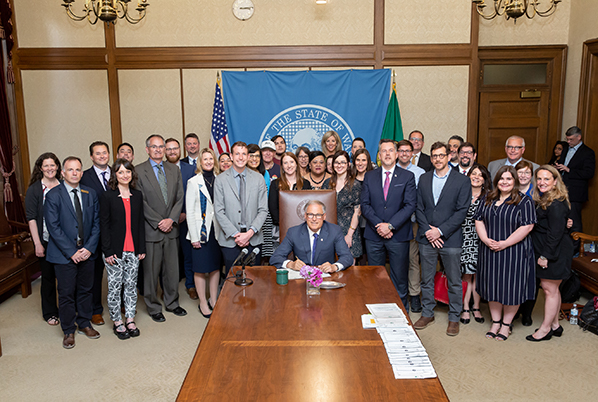
The 2020 Session adjourned “Sine Die” on March 12 bringing a welcome to the biennial session. In Washington, the Legislature conducts “long sessions” in the odd years (105 days) where they adopt a budget and do the heavy lifting of policy work. The “short sessions” in the even years (60 days) are meant to serve as a supplement to the prior year and addressing any changes to the budget, and bills that were not passed the prior session.
Prior to the 2019 session we polled nearly 1,000 of our members to ask what our priorities should be in this two-year process. They clearly told us that we needed to work on real estate taxes and fees, supporting policies that led to new (preferably first-time) homeownership opportunities and helping restart the condominium market. We accomplished many of those objectives in the 2019 session, and added some significant victories in the 2020 session.
“The 2020 Legislative Session built on the successes we achieved in the 2019 session. We put money back in our members pockets, increased housing supply options for the entire state and defeated several bills that would have brought harm to our industry. It was a great session for our members, homeowners and those who want to become homeowners”
-Kitty Wallace, Washington REALTORS® President
TAXES & FEES
The 2019 session saw an unusual bill that lowered the Real Estate Excise Tax (REET) on many properties but raised it on high end properties, to include commercial real estate. All property sales under $1.55 Million (at least 90% of all sales in WA) saw a decrease in real estate excise tax. Predictably, we saw a rush in the commercial real estate market to complete deals before the bills effective date of January 1, 2020 that likely pulled some 2020 transactions into 2019 to avoid the increase. In most non-commercial transactions, you are able to tell sellers you helped put more equity back into their pocket.
We were also able to exempt Real Estate brokerage services from the B&O Tax increase applied to most service businesses. The 2019 B&O Increase came back to the legislature this year for clarification, and once again real estate brokerage services were not included in the service businesses that will pay the B&O increase.
Both bills took effect January 1, 2020 and we’re monitoring the impacts across the industry.
HOMEOWNERSHIP OPPORTUNITIES
The 2019 session saw the Legislature adopt HB 1923 which incentivized cities to adopt ordinances that would allow “missing middle” types of housing to be built. That bill was extraordinarily successful with over 70 local jurisdictions taking advantage of the bill.
The legislature built off of that success and in 2020 extended the deadline for the incentives and also removed population size restrictions. With this change, cities of all sizes can take advantage of these incentives. We know our smaller cities also want to build missing middle housing and now they will have more tools to make that a reality.
The legislature also furthered legislation on encouraging Accessory Dwelling Units in local jurisdictions, moving local comprehensive plan dates to correspond with data from the US Census, and added an extension of popular incentives in the Multi Family Tax Exemption bill.
WHAT DIDN’T PASS
Most sessions are defined by what bills passed, but bills that didn’t pass are just as important. The 2020 session was no exception to this rule we saw numerous bills that would have dramatically impacted Real Estate fall by the wayside. These included a bill that would have required lawyers on both sides of a transaction in any in-house listing, a new independent contractor test that could have taken away REALTORS® independent contractor status, rent control, just cause eviction, a bill that would have made it easier to implement additional real estate excise tax in certain areas, and a head tax on highly paid employees that would have applied to certain real estate businesses and brokers in King County.
The 2019-2020 Sessions are now a wrap. Our members made their priorities clear, and we were able to take steps to meet those priorities. More work remains- especially on first time home owner opportunities. We will continue to listen to our members and work with legislators in an effort to keep moving the industry forward.





 The Benton County Rural Water Supply Program went into effect on February 1, 2020. This program was established to provide mitigation for any new residential use within the Mitigation Area.
The Benton County Rural Water Supply Program went into effect on February 1, 2020. This program was established to provide mitigation for any new residential use within the Mitigation Area.